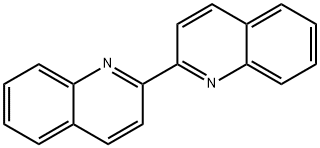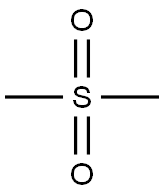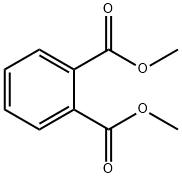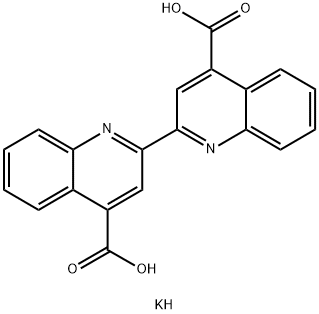2,2'-Biquinoline
Synonym(s):2,2′-Biquinoline;2,2′-Diquinolyl;Cuproin;Cuproine, 2,2′-Diquinolyl
- CAS NO.:119-91-5
- Empirical Formula: C18H12N2
- Molecular Weight: 256.3
- MDL number: MFCD00006740
- EINECS: 204-357-5
- SAFETY DATA SHEET (SDS)
- Update Date: 2024-08-19 17:35:41

What is 2,2'-Biquinoline?
Chemical properties
SLIGHTLY YELLOW TO LIGHT BEIGE SHINY FLAKES
The Uses of 2,2'-Biquinoline
2,2'-Biquinoline is used as a reagent for spectrophotometric determination of Cu and as an indicator for titration of organolithium reagents, giving yellow-green charge-transfer complexes.
What are the applications of Application
2,2'-Biquinoline, also known as cuprous reagent, reacts with monovalent cupric ion to give a purple color. It is a highly selective reagent for the determination of cuprous. It can be utilized as a ligand in the synthesis of heteroleptic Cu(I) complexes for light-emitting diodes(LED) and cationic iridium(III) complexes as phosphorescent dyes for live-cell imaging.
Synthesis Reference(s)
Tetrahedron Letters, 15, p. 2373, 1974 DOI: 10.1016/S0040-4039(01)92259-2
General Description
2,2′-Biquinoline is a white crystalline solid and it melts at 176°C. It is insoluble in water, but is soluble in ethyl, amyl and isoamyl alcohol, isoamyl acetate, dimethylformamide, acetic acid, acetonitrile and carbon tetrachloride.
Purification Methods
Decolourise 2,2'-biquinolyl in CHCl3 solution (charcoal), then crystallise it to constant melting point from EtOH or pet ether [Cumper et al. J Chem Soc 1188 1962]. [Beilstein 23/10 V 8.]
Properties of 2,2'-Biquinoline
| Melting point: | 192-195 °C(lit.) |
| Boiling point: | 389.54°C (rough estimate) |
| Density | 0.9734 (rough estimate) |
| refractive index | 1.6300 (estimate) |
| storage temp. | Keep in dark place,Sealed in dry,Room Temperature |
| solubility | 1.02mg/l |
| pka | 2.19±0.61(Predicted) |
| form | Shiny Flakes |
| color | Slightly yellow to light beige |
| Water Solubility | Sparingly soluble in water (0.001g/L). |
| BRN | 187259 |
| CAS DataBase Reference | 119-91-5(CAS DataBase Reference) |
| NIST Chemistry Reference | 2,2'-Biquinoline(119-91-5) |
| EPA Substance Registry System | 2,2'-Biquinoline (119-91-5) |
Safety information for 2,2'-Biquinoline
| Signal word | Warning |
| Pictogram(s) |
 Exclamation Mark Irritant GHS07 |
| GHS Hazard Statements |
H315:Skin corrosion/irritation H319:Serious eye damage/eye irritation H335:Specific target organ toxicity, single exposure;Respiratory tract irritation |
| Precautionary Statement Codes |
P261:Avoid breathing dust/fume/gas/mist/vapours/spray. P264:Wash hands thoroughly after handling. P264:Wash skin thouroughly after handling. P280:Wear protective gloves/protective clothing/eye protection/face protection. P304+P340:IF INHALED: Remove victim to fresh air and Keep at rest in a position comfortable for breathing. P305+P351+P338:IF IN EYES: Rinse cautiously with water for several minutes. Remove contact lenses, if present and easy to do. Continuerinsing. P405:Store locked up. |
Computed Descriptors for 2,2'-Biquinoline
| InChIKey | WPTCSQBWLUUYDV-UHFFFAOYSA-N |
Abamectin manufacturer
Pallav Chemicals And Solvents Pvt Ltd
New Products
4-AMINO-TETRAHYDRO-PYRAN-4-CARBOXYLIC ACID HCL 4-(Dimethylamino)tetrahydro-2H-pyran-4-carbonitrile 4-Aminotetrahydropyran-4-carbonitrile Hydrochloride (R)-3-Aminobutanenitrile Hydrochloride 3-((Dimethylamino)methyl)-5-methylhexan-2-one oxalate 1,4-Dioxa-8-azaspiro[4.5]decane 5-Bromo-2-nitropyridine Nimesulide BP Aceclofenac IP/BP/EP Diclofenac Sodium IP/BP/EP/USP Mefenamic Acid IP/BP/EP/USP Ornidazole IP Diclofenac Potassium THOMAIND PAPER PH 2.0 TO 4.5 1 BOX BUFFER CAPSULE PH 9.2 - 10 CAP SODIUM CHLORIDE 0.1N CVS ALLOXAN MONOHYDRATE 98% PLATINUM 0.5% ON 3 MM ALUMINA PELLETS (TYPE 73) LITHIUM AAS SOLUTION 2-Bromo-1-(bromomethyl)-3-chloro-5-nitrobenzene 2-Bromo-3-nitroaniline N-(3-Hydroxypropyl)-N-methylacetamide 3-Bromo-6-chloropyridazine 4-ethyl-3-nitrobenzoic acidRelated products of tetrahydrofuran








You may like
-
 2,2-Biquinoline (2,2-Diquinolyl CAS 119-91-5View Details
2,2-Biquinoline (2,2-Diquinolyl CAS 119-91-5View Details
119-91-5 -
 2,2'-Biquinoline, GR 99%+ CAS 119-91-5View Details
2,2'-Biquinoline, GR 99%+ CAS 119-91-5View Details
119-91-5 -
 2,2'-Biquinoline CAS 119-91-5View Details
2,2'-Biquinoline CAS 119-91-5View Details
119-91-5 -
 2,2'-BIQUINOLINE AR CAS 119-91-5View Details
2,2'-BIQUINOLINE AR CAS 119-91-5View Details
119-91-5 -
 2,2′-Biquinoline CAS 119-91-5View Details
2,2′-Biquinoline CAS 119-91-5View Details
119-91-5 -
 2,2'-Biquinoline 99% AR 119-91-5 99%View Details
2,2'-Biquinoline 99% AR 119-91-5 99%View Details
119-91-5 -
 2-(3-(tert-butyl)phenoxy)-2-methylpropanoic acid 1307449-08-6 98%View Details
2-(3-(tert-butyl)phenoxy)-2-methylpropanoic acid 1307449-08-6 98%View Details
1307449-08-6 -
 Lithium ClavulanateView Details
Lithium ClavulanateView Details
61177-44-4